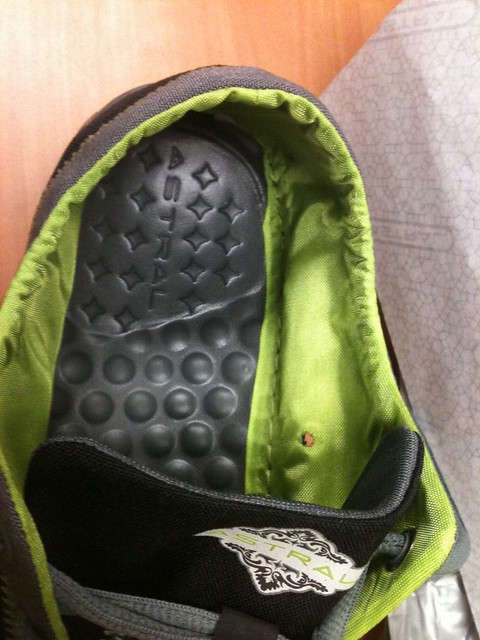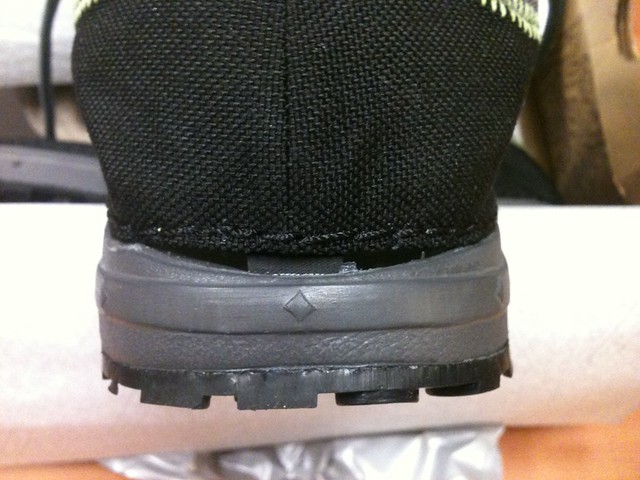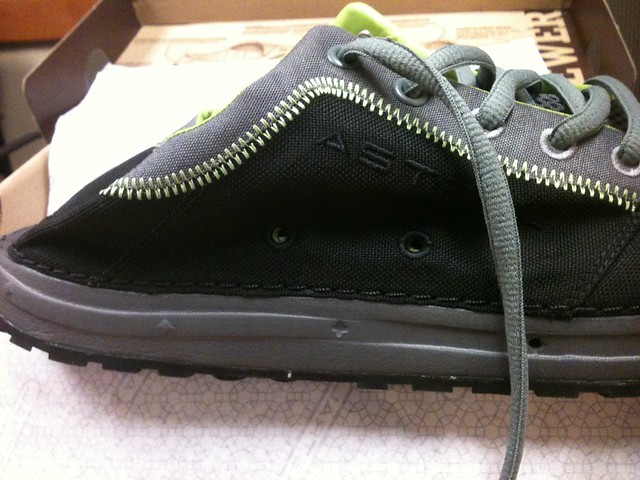Sometimes as a blogger, you wonder if anyone is actually listening. Page views are fine but I look at it like conversations. I wonder if I gave the people reading something memorable, useful or entertaining. With the reviews that I do, I wonder if the companies are listening. I know for sure that one of them is.
A year ago I ordered a pair of Astral Brewer kayaking/all purpose/water shoes. A real hybrid between night on the boardwalk and river running shoes, the Astral Brewer looked great, had amazing features and was to be my last kayaking shoe purchase until I wore them out. During the review period, actually, the very first day, my hopes were dashed by blisters. An awful exposed seam in the toe box was causing me problems. I bought some nylon socks to wear the shoes with and the blisters stopped but honestly, who wants to wear socks with kayaking shoes? Probably the same guys that wear socks with flip flops.
A few months ago Astral contacted me about the review. They knew of my review and wanted to see what I thought of the new revised Brewer. I happily agreed and a few days later, I had a box waiting on me when I got home.
I quickly tore into the box, pulled out the black and white shoes and sunk my hand deep into the interior. Strangely, though I should have expected it, the previous harsh seam was barely there in the new version. I took the shoe, still on my hand, out to the garage and found the previous Brewer pair, a charcoal and green , and did a side by side interior feel test. It was worlds different. That's all well and good but I don't really have baby soft hands. I needed to put them on my feet.
A charcoal Brewer on one foot and a black one on the other, I walked around outside, sans socks, and causing the neighborhood to have Punky Brewster flashbacks. After about three minutes of this, I took of the charcoal shoe, Version 1.0 from Astral. Blisters were on the verge. The black shoe though, this Version 2.0, it felt great. My foot was comfortable, it wasn't slipping, and the interior and exterior traction were great as always. I went back in the house, retrieved the mate shoe and paired them up on my feet. I went back outside, walking around for a while and my wife comes outside and tells me to get in the house. I look crazy pacing and looking at my feet apparently.
The next step was to do some water testing. I'll spare the finite details but I put them through sand, mud, rocks and trees with no issues. I washed them thoroughly after four days and started the daily wear test. I wore these new Brewers everyday for five days, without socks, all day. I even wore them to church. After five days, they didn't stink, my feet didn't hurt and I had talked to dozens of people about my footwear choice.
Success!!!!
I have since worn these shoes at almost every outdoor opportunity and even on a couple of dates. This Brewer, Version 2.0 as I am calling it, is what I expect (demand?) in a water shoe. Astral has gone out of their way to prove they listen to the consumer. They want you to love these shoes. I can tell you after a few months of kayak fishing in them, I do.
A year ago I ordered a pair of Astral Brewer kayaking/all purpose/water shoes. A real hybrid between night on the boardwalk and river running shoes, the Astral Brewer looked great, had amazing features and was to be my last kayaking shoe purchase until I wore them out. During the review period, actually, the very first day, my hopes were dashed by blisters. An awful exposed seam in the toe box was causing me problems. I bought some nylon socks to wear the shoes with and the blisters stopped but honestly, who wants to wear socks with kayaking shoes? Probably the same guys that wear socks with flip flops.
A few months ago Astral contacted me about the review. They knew of my review and wanted to see what I thought of the new revised Brewer. I happily agreed and a few days later, I had a box waiting on me when I got home.
I quickly tore into the box, pulled out the black and white shoes and sunk my hand deep into the interior. Strangely, though I should have expected it, the previous harsh seam was barely there in the new version. I took the shoe, still on my hand, out to the garage and found the previous Brewer pair, a charcoal and green , and did a side by side interior feel test. It was worlds different. That's all well and good but I don't really have baby soft hands. I needed to put them on my feet.
A charcoal Brewer on one foot and a black one on the other, I walked around outside, sans socks, and causing the neighborhood to have Punky Brewster flashbacks. After about three minutes of this, I took of the charcoal shoe, Version 1.0 from Astral. Blisters were on the verge. The black shoe though, this Version 2.0, it felt great. My foot was comfortable, it wasn't slipping, and the interior and exterior traction were great as always. I went back in the house, retrieved the mate shoe and paired them up on my feet. I went back outside, walking around for a while and my wife comes outside and tells me to get in the house. I look crazy pacing and looking at my feet apparently.
The next step was to do some water testing. I'll spare the finite details but I put them through sand, mud, rocks and trees with no issues. I washed them thoroughly after four days and started the daily wear test. I wore these new Brewers everyday for five days, without socks, all day. I even wore them to church. After five days, they didn't stink, my feet didn't hurt and I had talked to dozens of people about my footwear choice.
Success!!!!
I have since worn these shoes at almost every outdoor opportunity and even on a couple of dates. This Brewer, Version 2.0 as I am calling it, is what I expect (demand?) in a water shoe. Astral has gone out of their way to prove they listen to the consumer. They want you to love these shoes. I can tell you after a few months of kayak fishing in them, I do.









